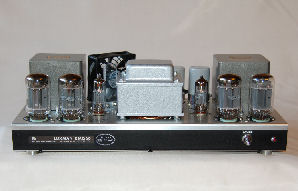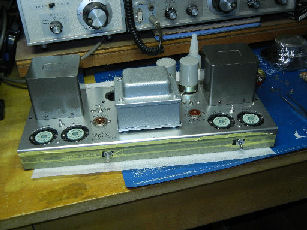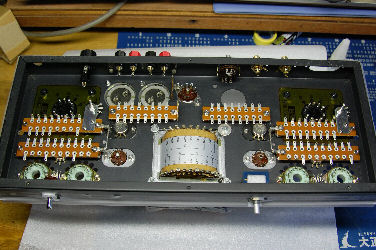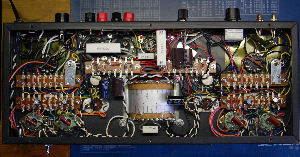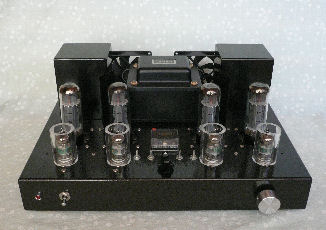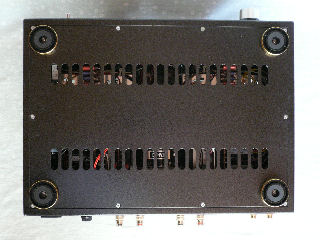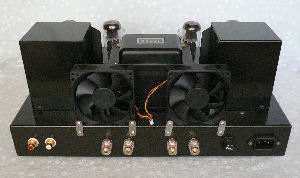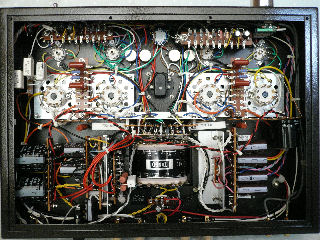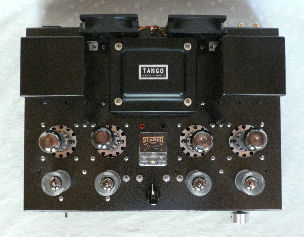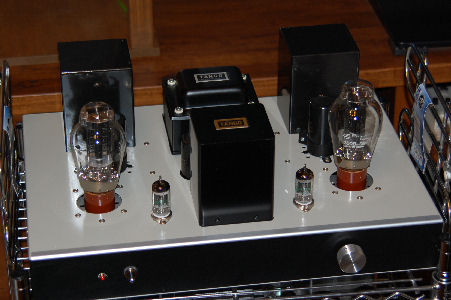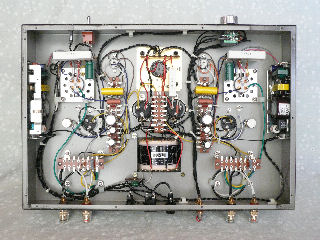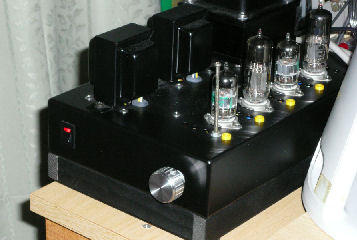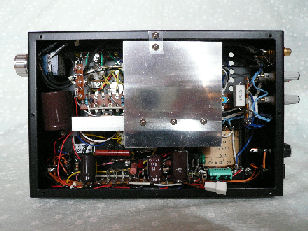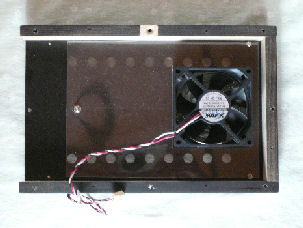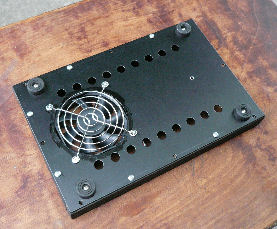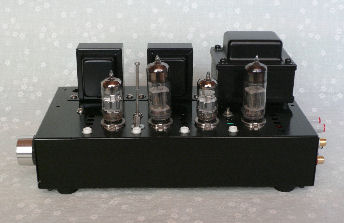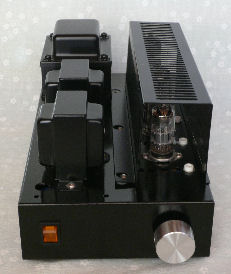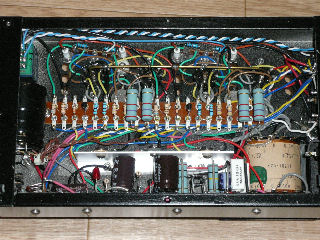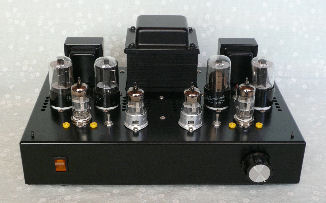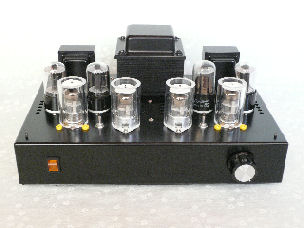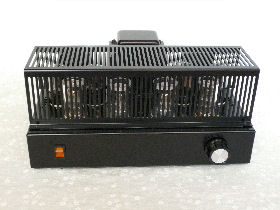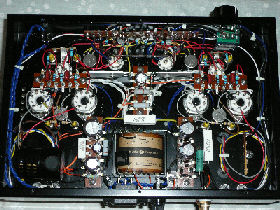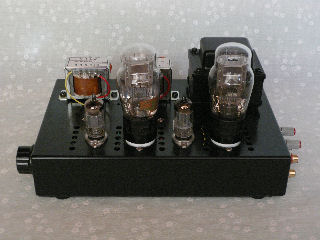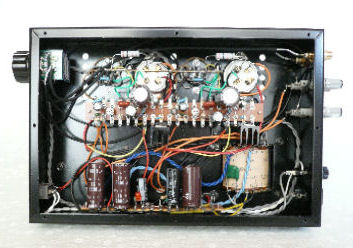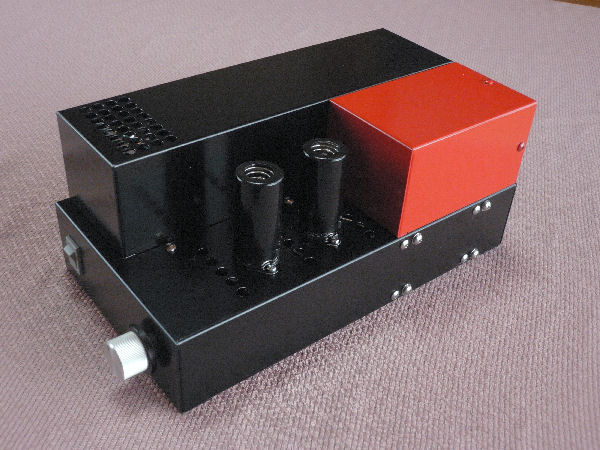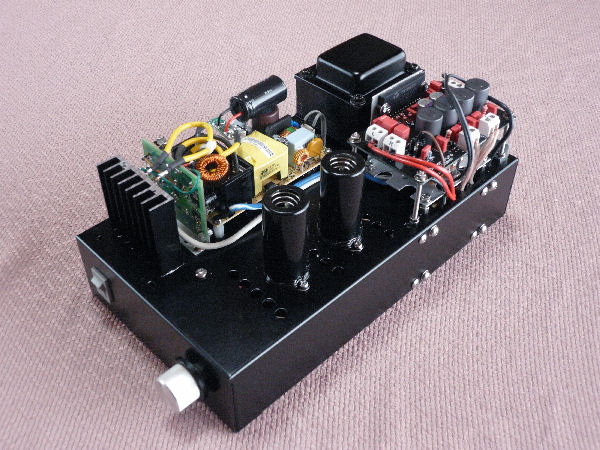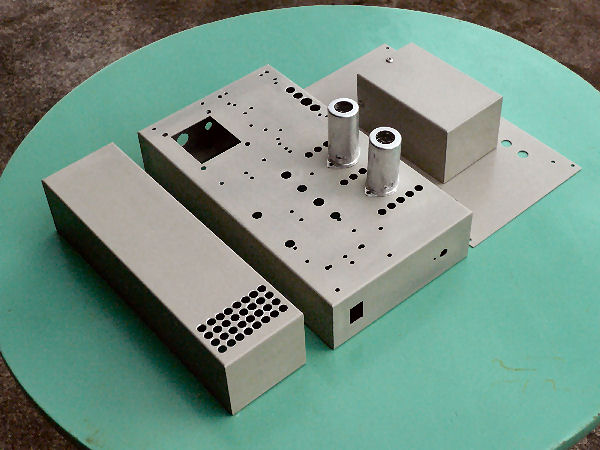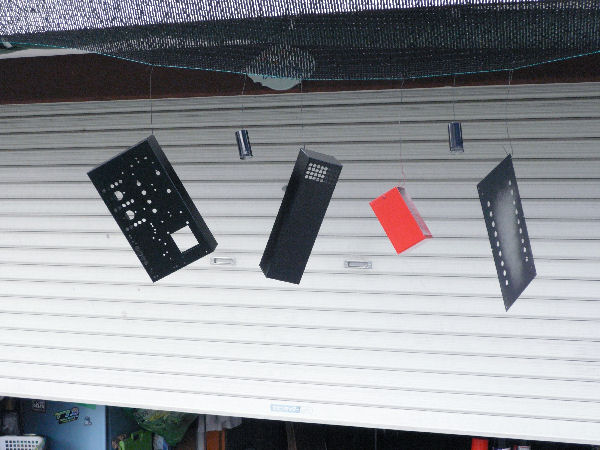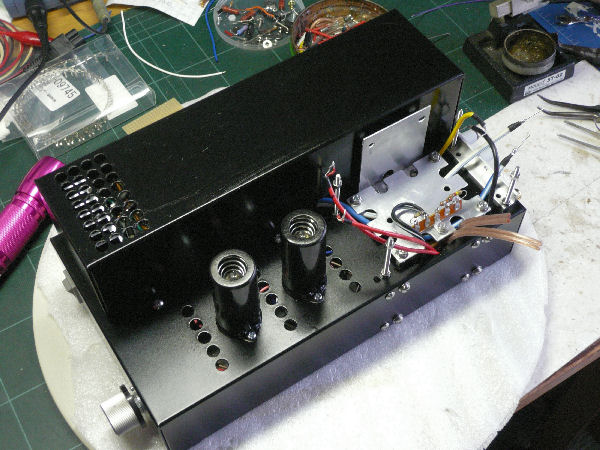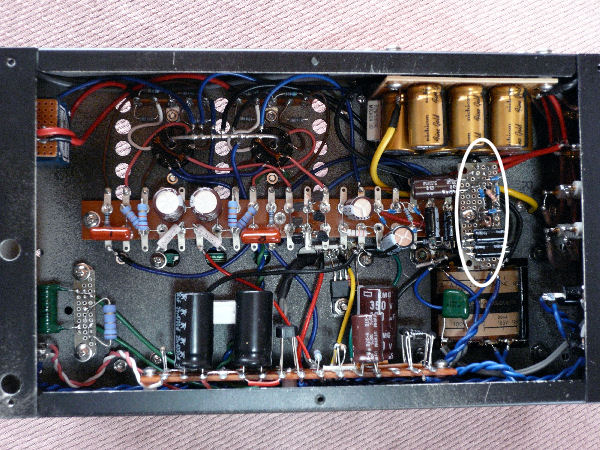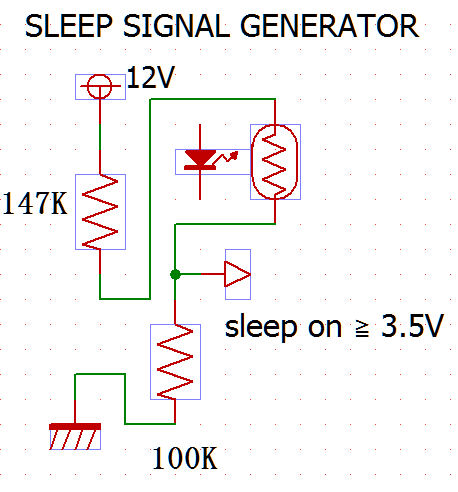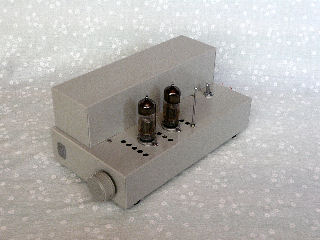
Well known among tube amp builders in Japna? 6N6P amplifier designed and parts prepared to be distributed by Mr. Perche.
The photo is a model revised with a new power transformer.
The amp is stable even after years of using.
-1/3-
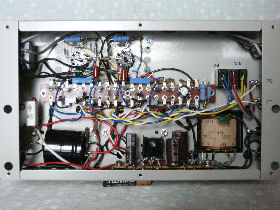
I replaced usual wire with shielded one to the input circuit as I changed power transformers.
A big capacitor is added to the power circuit to enhans the lower sound.
MISTAKES:The building was the work I did after many many years. That is, I didn't follow the way I ought to in the building process. I overlooked a few wrong wirings and broke a pilot LED lamp and a resistor as I put on the power for the first time. Other than thise, there were two more wrong wirings.
-2/3-
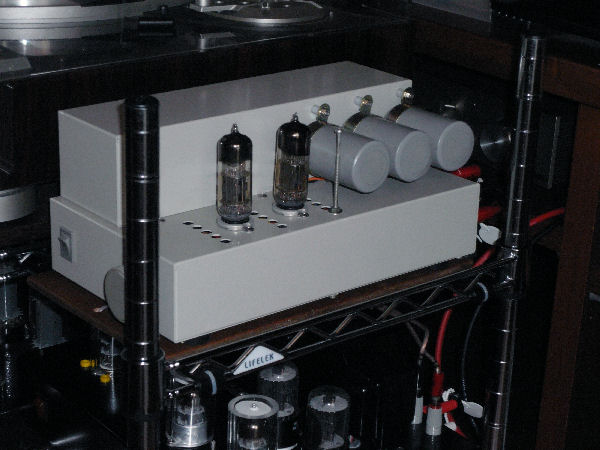
Postscript
I learned that when wiring, you should trace with a red pencil the finished wiring line on the circuit diagram! The amp underwent two big reformations. It is now used as my main amp in the living room. See condenser tuning of tube amps.-3/3-
Return to the list